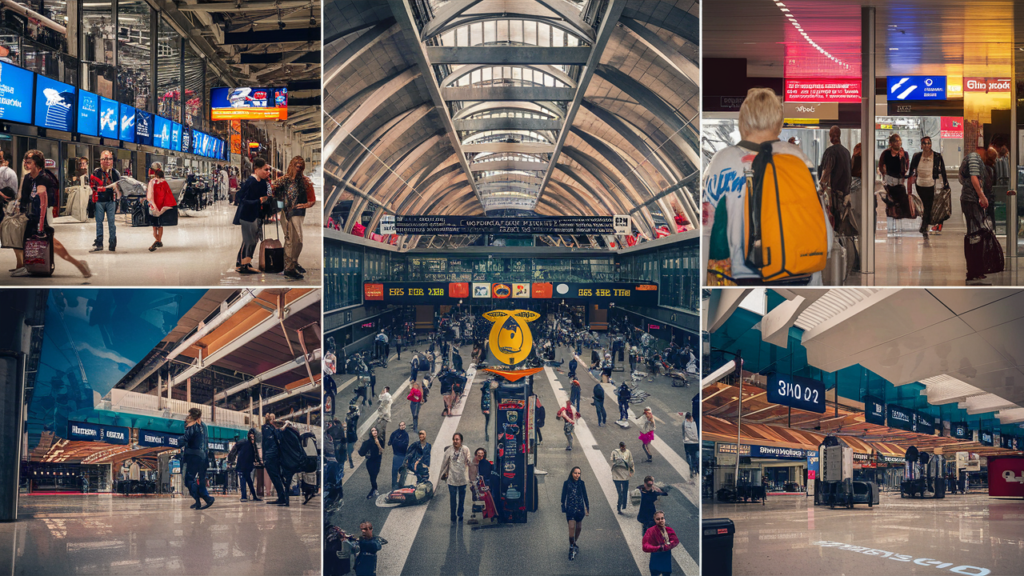
Introduction of Airports
Have you ever wondered about the massive scale and complexity of the world’s largest airports? They’re like small cities bustling with activity, with millions of passengers passing through them every year. Let’s take a fascinating through the evolution of these air travel hubs and discover how they’ve expanded and adapted over time to meet the needs of global travelers.
Early History of Airport Development

The inception of air travel marked the beginning of a new era in transportation and necessitated the development of airports. Initially modest in scale, the first commercial airports were more like airfields — simple strips of grass with minimal facilities.
Pioneering Airports
- College Park Airport in Maryland, USA (1909) – thought to be the world’s oldest airport still in use.
- Hamburg Airport in Germany (1911) – one of the oldest airports in the world designed from the onset for commercial use.
These airports laid the groundwork for modern aviation, initiating the transformation from grassy runways to sophisticated complexes.
The Age of Expansion: 1950s-1980s

Post World War II, the boom in jet aircraft led to exponential growth in passenger traffic. Airports had to evolve, expanding drastically in size and infrastructure to accommodate this surge.
Examples of Expansion
- John F. Kennedy International Airport in New York – started as Idlewild Airport in 1948, and was redesigned to handle jet aircraft and a growing number of international flights.
- Heathrow Airport in London – originated as a small airfield, and expanded rapidly during the jet age; Terminal 1 opened in 1968 to handle millions of international passengers.
The Rise of Mega Airports: 1990s – Present

The need for connectivity and superior facilities catalyzed the rise of mega airports. Today’s largest airports are not just places to catch a flight; they are extensive complexes that cater to all the needs of travelers and employees alike.
Spotlight on Innovations
- Changi Airport in Singapore – regularly voted the world’s best airport, known for its beautiful design, efficiency, and passenger-friendly amenities like a butterfly garden and a rooftop swimming pool.
- Dubai International Airport in UAE – focuses on luxury with expansive duty-free shops, gold kiosks, and even an indoor waterfall.
Future Trends in Airport Design

Looking towards the future, sustainability, passenger experience, and digital technology are shaping the evolution of airport design. How will airports continue to evolve? It’s an exciting question!
Anticipated Developments
- Biometric Technology – implementation for smoother, faster passenger processing.
- Green Initiatives – greater focus on reducing carbon footprints through sustainable practices and design, like solar-powered terminals.
My Personal Anecdote: A Stroll Through Schiphol

Anyone who’s traveled extensively through airports will appreciate their complexity and charm. I remember my last walk through Amsterdam Schiphol Airport; the blend of cozy shops, the vast array of dining options, and the seamless signages made my travel experience both comforting and interesting. Airports like these are a testament to human ingenuity in design and organization.
Conclusion: Airports as Gateways to the World
Airports are more than just transit points; they are vibrant ecosystems that reflect the dynamic nature of global movement. Every update, every expansion and every added facility enhances the journey of millions of travelers. As we look to the future, the continuing evolution of airports promises even better and more exciting travel experiences. Safe travels! May your journeys be as amazing as the places you explore!
Internal Links
- History of Airports – Explore the early days of aviation and the development of airports worldwide.
- Airport Innovations – Discover the latest technological advancements transforming modern airports.
- Future of Air Travel – Learn about upcoming trends and predictions for the aviation industry.
- Top 10 Busiest Airports – Check out the list of the world’s busiest airports by passenger traffic.
External Links
- Airport Council International – World Airport Traffic Reports
- Smithsonian National Air and Space Museum
- International Air Transport Association (IATA)
- Federal Aviation Administration (FAA)
- The Evolution of Airports – BBC Travel

